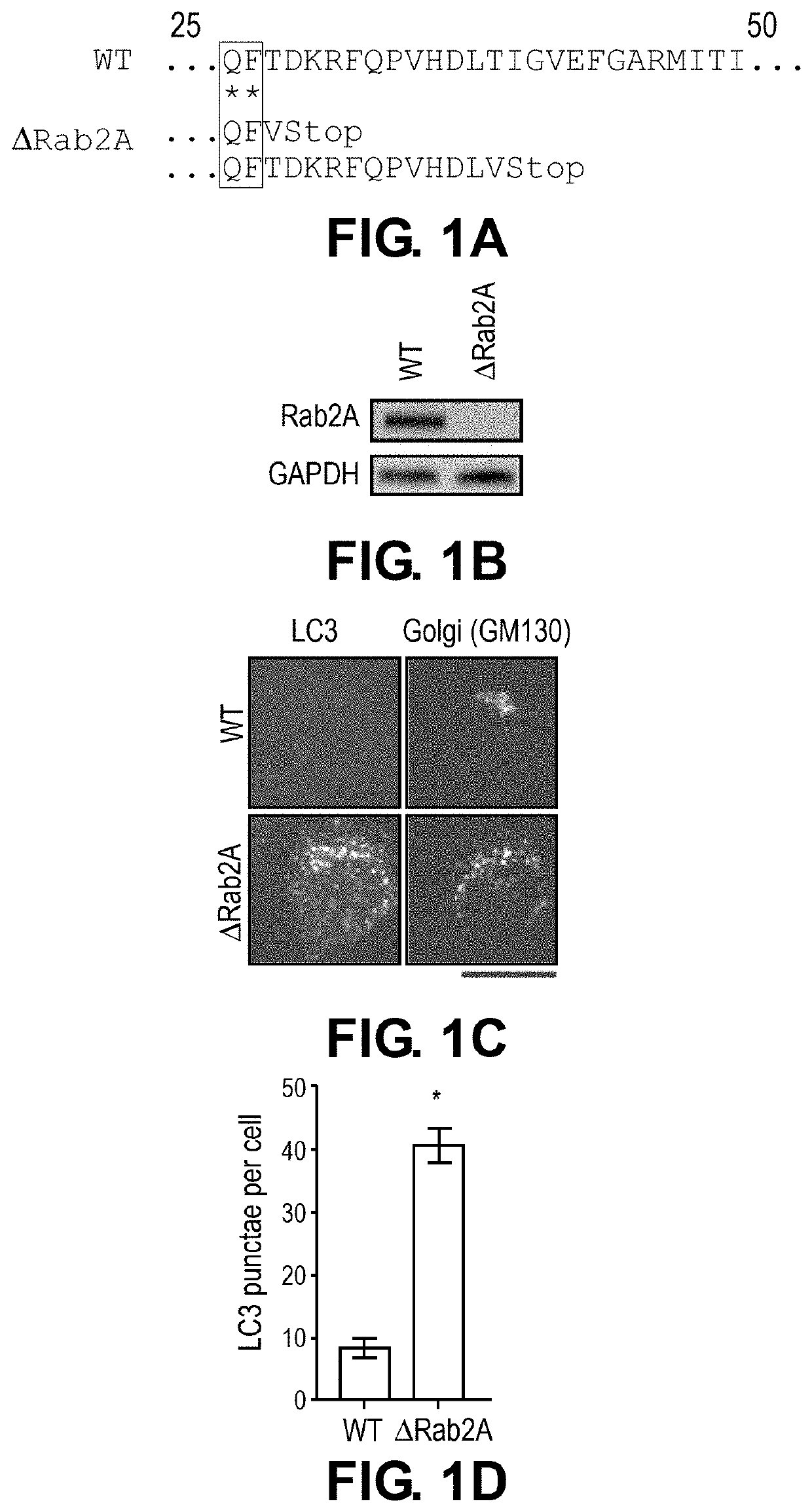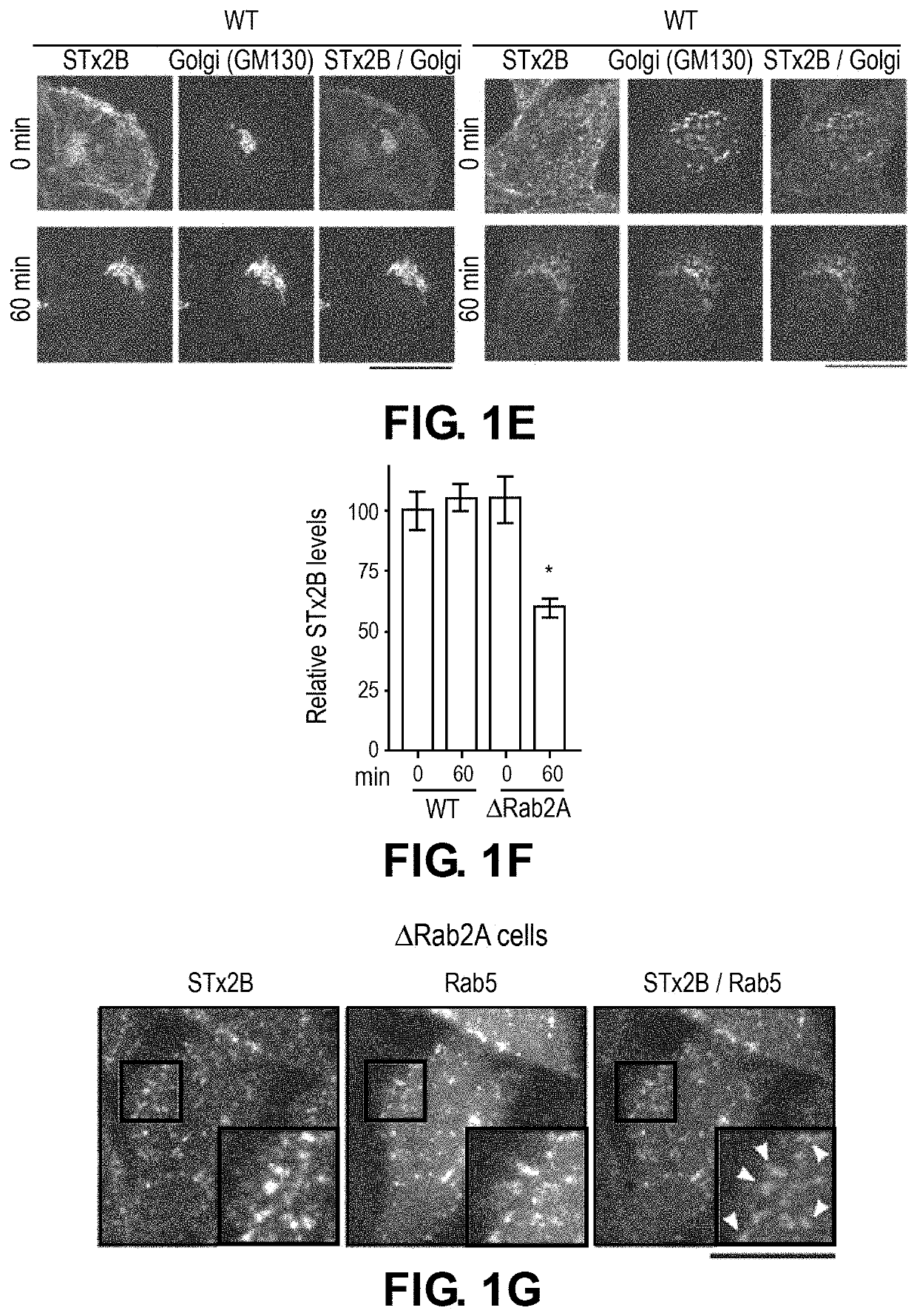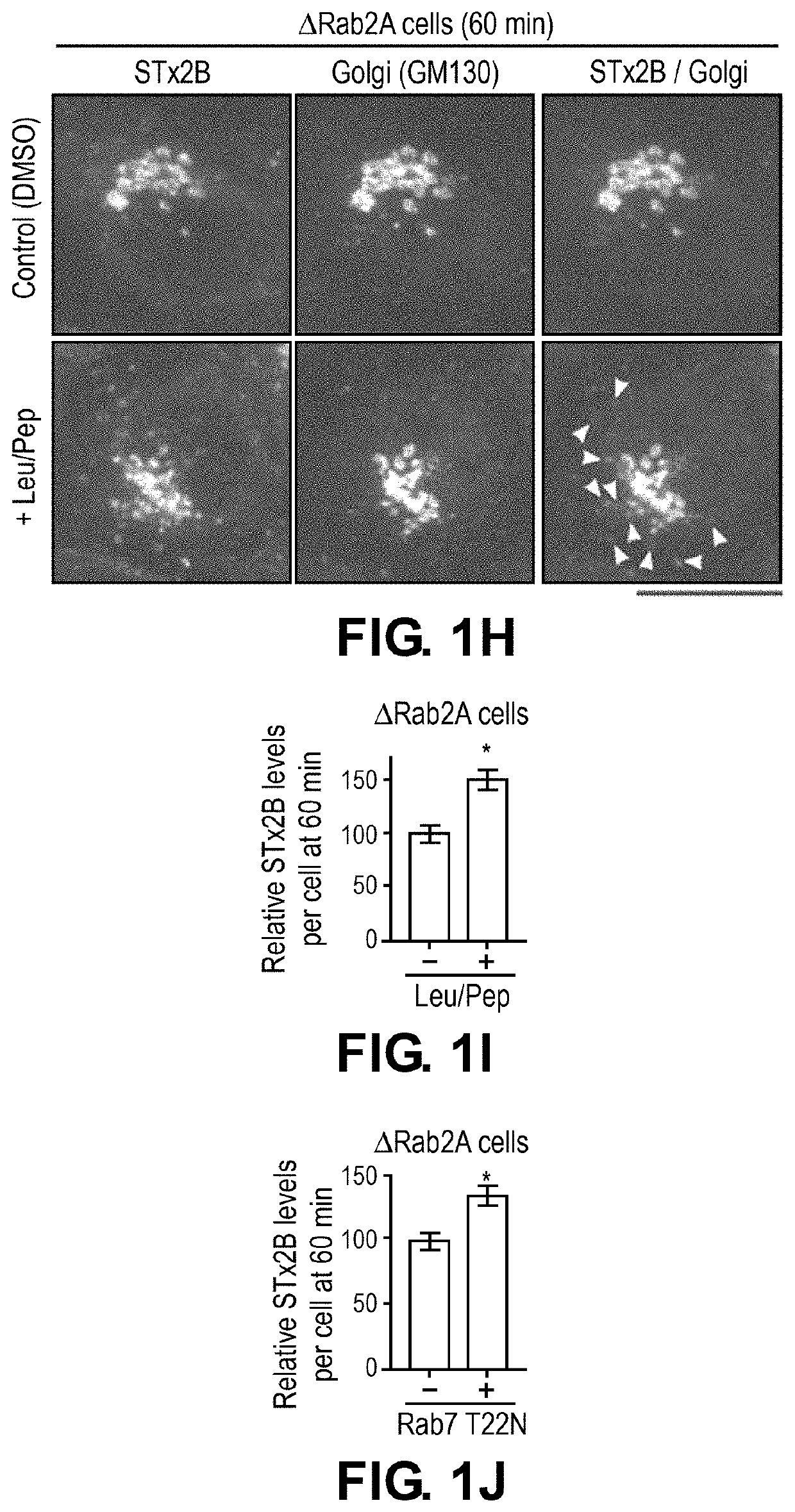Methods and compositions for the treatment of Shiga Toxicosis
a technology of toxicosis and compositions, applied in the field of methods and compositions for the treatment of shiga toxicosis, can solve the problems of preventing the development of therapeutics and preventing the approval of toxin transport inhibitors
- Summary
- Abstract
- Description
- Claims
- Application Information
AI Technical Summary
Benefits of technology
Problems solved by technology
Method used
Image
Examples
example 1
and Methods
[0113]Experimental design. Assays in cell culture were designed such that differences between control and experimental (i.e., knockout, dicer or siRNA-depleted, or drug-treated) groups could be compared using standard statistical tests described below and in the description of the drawings. All cell culture experiments were replicated at least three times independently. Animal experiments were performed using vehicle- or tamoxifen-treated mice and differences between groups compared statistically using methods described below.
[0114]Cell culture and generation of knockout and over-expression clones. WT cells were a HeLa cell line that stably over-expressed globotriaosylceramide, the cell surface receptor for STx1B and STx2B. This sub-line has been used for numerous assays on STx1 and STx2 over the last few years (8, 9). Culture conditions were identical to those described previously (8, 9). Mutations in genomic DNA were introduced using a lentivirus-based CRISPR / Cas9 syste...
example 2
s or Function of Lysosomes and / or Autophagy is Required for STx2 Transport and Toxicity
[0132]To elucidate the mechanisms of STx2 trafficking, a viability-based genome-wide siRNA screen was recently performed, and 12 endosome / Golgi-localized host proteins were identified that, when depleted, reproducibly protected against STx2-induced cell death (8). Surprisingly, 6 of 12 identified hits (Rab2a, FUT1, STAM, TPCN1, SNX14 and VEGFR2) regulate lysosome biogenesis / function and / or autophagy (Table 1). Here, it was hypothesized that biogenesis or function of lysosomes and / or the autophagy pathway is required for the trafficking and toxicity of STx2, and targeting lysosomes / autophagy may provide a therapeutically-viable means to block STx2 trafficking.
[0133]
TABLE 1Role of TPCN1, Rab2a, SNX14, STAM, VEGFR2 andFUT1 in lysosome function and / or autophagy.HitRole in lysosome function / autophagyReferenceTPCN1Endosome-localized calcium channel(41)required for autophagy and lysosomematurationRab2aSm...
example 3
Late Endosomes with Lysosomes is Necessary for the Transport of STx2 From Early Endosomes to the Golgi, but the Autophagy Pathway is Dispensable
[0137]To directly test the above hypothesis and distinguish between the role of lysosomes and autophagy, advantage was taken of the fact that the HOPS tethering complex is required for the fusion of both late endosomes and autophagosomes with lysosomes (18-20). Depletion of Vps39, a component of the HOPS complex, blocks both these membrane fusion events, and inhibits lysosome biogenesis / function as well as autophagy (18-20). In contrast, formation of autophagosomes requires ATG7 (21), and fusion of autophagosomes, but not late endosomes, with lysosomes requires syntaxin17 (20).
[0138]To test for the role of autophagy, ΔATG7 or Δsyntaxin17 cells were generated using CRISPR / Cas9. For both genes, the CRISPR / Cas9-system introduced stop codons in the genomic DNA and depleted transcript levels (FIGS. 2A-D). The mRFP-GFP-LC3 tandem reporter assay wa...
PUM
| Property | Measurement | Unit |
|---|---|---|
| Time | aaaaa | aaaaa |
| Time | aaaaa | aaaaa |
| Frequency | aaaaa | aaaaa |
Abstract
Description
Claims
Application Information
 Login to View More
Login to View More - R&D
- Intellectual Property
- Life Sciences
- Materials
- Tech Scout
- Unparalleled Data Quality
- Higher Quality Content
- 60% Fewer Hallucinations
Browse by: Latest US Patents, China's latest patents, Technical Efficacy Thesaurus, Application Domain, Technology Topic, Popular Technical Reports.
© 2025 PatSnap. All rights reserved.Legal|Privacy policy|Modern Slavery Act Transparency Statement|Sitemap|About US| Contact US: help@patsnap.com



